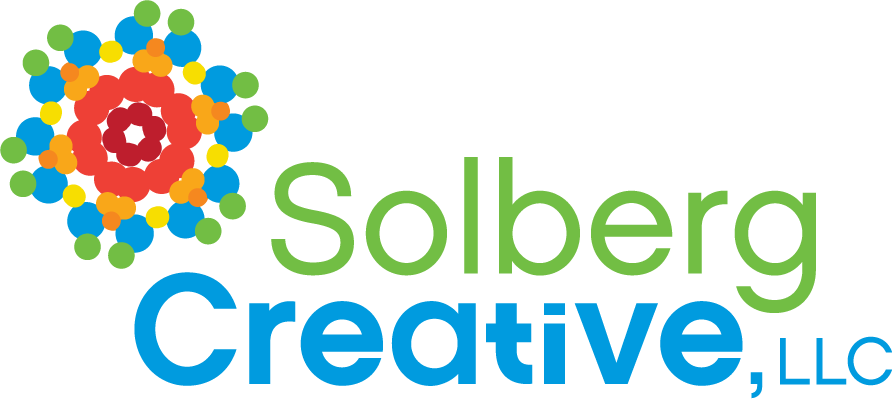Everyone has things they’re really smart about. Most people understand that there are times it’s better to bring a professional in than attempt doing something they don’t understand or have the training or experience to accomplish. For example, I love my dog Daisy (isn’t she cute??). But when we began noticing reactive behavior from her toward other dogs, I tried to solve it on my own.
Oops.
Then I brought the professionals in and learned what they had to teach me. Daisy will probably never be a good candidate for a visit to an off-leash park, but it’s remarkable how much progress she’s made. You know—once I brought the professionals in. And listened to them.
At Solberg Creative, we understand the value of reaching out to professionals in various arenas. But we’ve found that many clients sometimes have difficulty understanding what the professional is recommending and why. Here are some common scenarios we run across while working on various aspects of our services.

Logos
A well-designed logo is one of the most important tools in your marketing and branding toolkit. It needs to set your brand apart and help potential customers identify and recognize you. But there’s a key misstep to avoid when you bring in a designer: Thinking your logo is for you.
It’s not. It’s for the brand. Quite often, we’ve designed a logo that should fit the needs of the brand and its target market, but the client isn’t happy. In further discussion, we realized that even though the client understood they needed our expertise, they haven’t quite come around to understanding what that expertise means.
Logos have to meet certain parameters to function usefully. For example, if the art is too detailed, the text too small, or font too difficult to easily read, the colors off-putting to the target audience, they won’t understand it—and worse, won’t be inclined to respond positively. What’s more, the designs have to fit a wide variety of uses, including print, digital, banners, etc. All of those have different requirements too.
In other words, the client’s personal taste, which is what comes to their mind first, may not be at all in the best interests of the actual design and target audience that the design is meant to reach. That doesn’t mean there can’t be a middle ground; but first, the client should take a moment to consider what the designer (the one with the expertise) is recommending.
Content
In the early days of the internet, content was king, and everyone scrambled to get as many words online as they could. After all, the internet was infinite. Why not?
There are some good reasons why not. People began thinking in terms of what they thought their potential customers should want to read—not what those customers actually did want to read. That led to what web usability expert Steve Krug defined as happy talk: Piles of text people threw onto their web pages that actual website visitors really weren’t at all interested in. Example: Say someone has become a fan of a nonprofit, learned about their work, and wants to donate. So they visit the nonprofit’s “donate” page, where they find hundreds and hundreds of words telling them all the great things the nonprofit does.
Here’s the problem: They already know that. They went to the “donate” page because they want to donate, but now they have to scroll through tons of text they’re not remotely interested in reading. This kind of happy talk can frustrate and alienate website visitors, who come for very specific types of information, not a lot of gab. (For more details, you can try to find this version of Krug’s book—there’s a newer edition that focuses on the more technical aspects of web usability, but his earlier book about content and happy talk is still relevant and useful.) When it comes to web content, often less is better.
Project Management
Oh, the bliss of having someone come in and structure the workload and pace around a sizable project. It’s truly delightful when someone can come in and develop a detailed plan of what needs to happen when and who needs to do what. Great! We have a plan, let’s go!
However. There’s a difference between having a plan and actually implementing and acting on it. Even when the project manager has meticulously detailed every step and every person’s role and deadlines, all it takes is for one person to fall behind, and the entire project may be at risk. That person may not even realize the domino effect their delay may cause as people down the project line are held up and can’t get their part done on time either.
Sometimes clients think a project manager will develop the plan and somehow magically make it happen. But that second part requires buy-in and oversight, both from the client and the project manager. The project manager can keep the client up to date about the progress (or lack thereof), but it’s up to the client to ensure employees are following the plan.
Need help with design, content, or project management? Contact us here.

